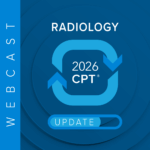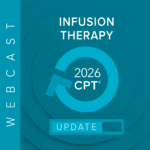Clinical documentation integrity (CDI) has matured beyond its initial focus on coding accuracy and Diagnosis-Related Group (DRG) optimization.
In 2025, it is central to payer compliance, audit defense, risk adjustment, and sustainable revenue. This article will explore how CDI professionals are bridging gaps between clinical care and financial strategy by leveraging education, data, technology, and interdisciplinary collaboration.
Over the last decade, CDI has evolved from a hospital-centric function aimed at optimizing inpatient reimbursement to a multidisciplinary effort essential for revenue integrity, compliance, and patient-centered care. CDI professionals now play a transformative role across the healthcare continuum, from inpatient facilities to ambulatory practices and behavioral health.
1. CDI as a Compliance Safeguard
Regulatory scrutiny is increasing. Both the U.S. Department of Health and Human Services (HHS) Office of Inspector General (OIG) and the Centers for Medicare & Medicaid Services (CMS) have tightened expectations regarding documentation specificity and medical necessity. In recent reviews, CMS has emphasized that clinical documentation must fully support every billed service – not just in terms of codes, but also of medical reasoning and specificity.
Common audit flags include vague diagnoses (e.g., “abdominal pain” with no differential), overuse of template-based notes, and failure to link conditions to treatment plans. CDI teams must now monitor these risk points and intervene early – ideally before claim submission – to avoid downstream denials or recoupments.
Hospitals that once viewed CDI as a billing initiative now rely on it for regulatory protection. Documentation that aligns with CMS requirements and payor guidelines not only secures payment, but also reduces the risk of extrapolated denials during audits.
2. Expansion into Outpatient and Value-Based Environments
Outpatient CDI is a fast-growing frontier. In the past, most CDI programs focused on inpatient settings, due to the impact of DRGs. However, with the growth of Medicare Advantage (MA) and value-based care models, outpatient documentation has become equally important. Hierarchical Condition Categories (HCCs), which drive risk adjustment and capitated payment models, rely heavily on accurate and complete documentation of chronic conditions.
For example, failure to capture the specificity of diabetes (with complications versus without) can result in under-adjusted risk scores. This not only impacts reimbursement, but also reflects inaccurately on the provider’s population health outcomes.
Organizations that invest in outpatient CDI see stronger HCC capture, improved patient stratification, and higher quality scores under programs like the Merit-Based Incentive Payment System (MIPS).
3. The Human Side of Technology
Technology is also transforming CDI work. Artificial intelligence (AI) and natural language processing (NLP) tools now assist in real-time chart analysis, flagging incomplete documentation, or prompting queries. These tools are integrated with electronic health records (EHRs) and provide unobtrusive prompts for clinical specificity.
However, technology should enhance, not replace, human oversight. Automation bias is a real risk; clinicians may blindly accept software-generated suggestions without full clinical assessment. CDI staff must provide oversight and ensure that technology is used responsibly.
A hybrid approach – using NLP to triage charts and experienced reviewers to apply clinical context – has shown the most success. According to a 2024 study published in the Journal of AHIMA (the American Health Information Management Association), hybrid CDI teams using AI plus clinical validation saw a 17-percent increase in documentation accuracy without sacrificing provider satisfaction.
4. Physician Engagement Is Still the Cornerstone
Even with smart tools, clinician cooperation remains foundational. One of the most practical CDI strategies is fostering trust and collaboration with physicians. The most effective CDI teams don’t operate in isolation – they round with providers, deliver real-time education, and show the downstream impact of good documentation on care quality and reimbursement.
For example, when a denial for sepsis is overturned because the CDI team ensured the production of supporting documentation, it becomes a learning opportunity. Sharing these “wins” with providers builds engagement and shifts perception; CDI is no longer seen as an administrative nuisance, but as a partner in patient care.
Training also matters. In 2025, several large health systems have implemented documentation boot camps for residents and APPs, covering topics like HCC coding, problem linkage, and legal risks of copy-forward documentation.
5. CDI in Denial Prevention and Appeals
The appeals process increasingly relies on documentation strength. When payors deny a claim – especially for high-dollar services like cardiac procedures or neuropsychiatric testing – the first step in an appeal is often a CDI-led review.
CDI specialists collaborate with coders, clinicians, and compliance staff to construct appeals that are clinically grounded and aligned with payor policies. In some systems, CDI personnel now sit on denial management committees, identifying trends and updating templates or policies based on real-world denials.
A practical example: one large multispecialty group in Ohio implemented a CDI review step for all cases coded with high-risk modifiers (25 and 59). Within six months, they reduced post-payment audits by 23 percent, demonstrating that preventive CDI strategies directly impact revenue protection.
6. Metrics That Reflect Maturity
Legacy CDI programs measured performance using basic metrics like the number of queries issued or physician response rate. While these are still relevant, mature programs track deeper indicators:
- Risk-adjusted reimbursement accuracy;
- Denial overturn rate attributed to documentation;
- Average time from encounter to CDI review; and
- Provider engagement scores.
By aligning CDI metrics with organizational goals, leaders can justify expansion into new areas – outpatient clinics, telehealth, or behavioral health – and advocate for investments in staffing or analytics tools.
7. Authoring the Future of CDI
CDI professionals are now expected to wear many hats, such as those of clinical interpreters, data analysts, educators, and compliance guardians. Their impact spans departments: revenue cycle, quality, risk, and even marketing (as HCC data is used in risk modeling).
To succeed, CDI teams must continuously evolve. This means staying updated with regulatory changes, embracing technology without losing clinical judgment, and keeping physician engagement at the center.
Conclusion
CDI is no longer a back-office operation – it’s a front-line function that safeguards both financial health and clinical accuracy. In a healthcare environment defined by audit risk, payment reform, and value-based care, robust documentation isn’t just about getting paid; it’s about telling the patient’s full story.
Organizations that invest in CDI now are future proofing themselves against regulatory pressure and financial volatility.
About the author:
Hasnain Ali is the founder of Global Tech Billing LLC, a leading healthcare support company specializing in end-to-end revenue cycle management. With a deep understanding of ICD coding, payer policies, and compliance protocols, Hasnain helps providers navigate the complex intersection of clinical documentation and financial accuracy. He is passionate about bringing clarity to coding systems and optimizing practice performance through ethical, data-driven billing solutions. His hands-on leadership and commitment to client success have made him a trusted partner for healthcare professionals nationwide. Hasnain believes great coding goes beyond reimbursement—it’s the foundation for informed care and long-term viability.
Contact the author:
Hasnain Ali <info@globaltechbilling.com>
References:
- Centers for Medicare & Medicaid Services. Risk Adjustment Data Validation Final Rule (2024).
- Office of Inspector General. OIG Work Plan Updates on Clinical Documentation (2024).
- AHIMA. Outpatient CDI Toolkit and Practice Briefs (2023).
- Journal of AHIMA. AI and NLP in CDI: Impact and Ethics (2024).
- National Association of Healthcare Revenue Integrity. Denials and Documentation: Best Practices in 2025.
EDITOR’S NOTE:
The opinions expressed in this article are solely those of the author and do not necessarily represent the views or opinions of MedLearn Media. We provide a platform for diverse perspectives, but the content and opinions expressed herein are the author’s own. MedLearn Media does not endorse or guarantee the accuracy of the information presented. Readers are encouraged to critically evaluate the content and conduct their own research. Any actions taken based on this article are at the reader’s own discretion.













